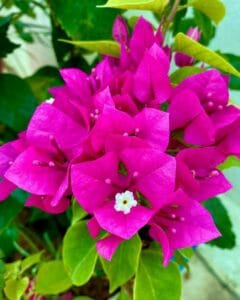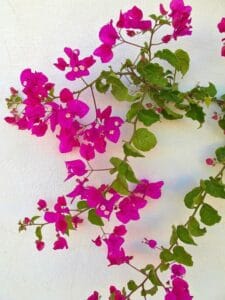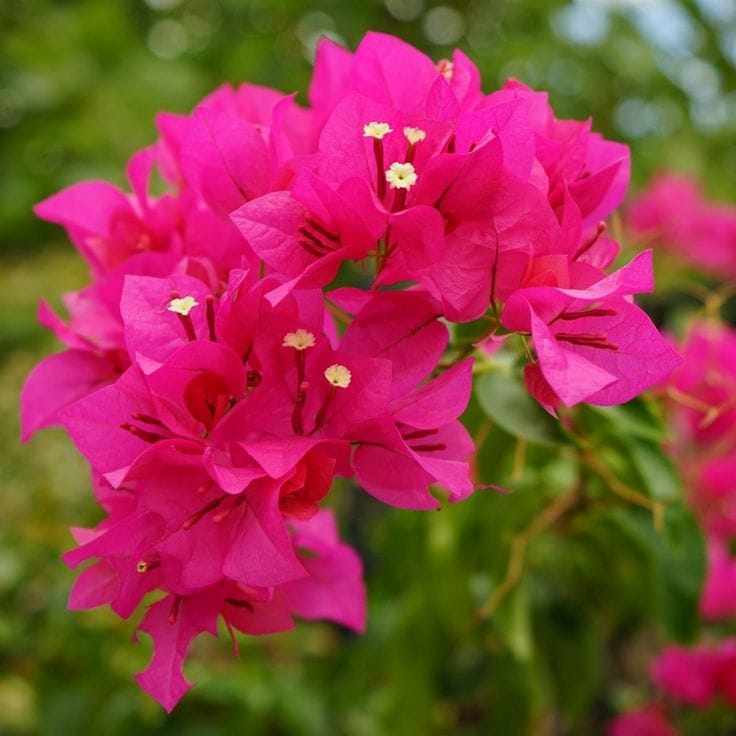Plant Bougainvillea: Complete History Cultivation Tips and Expert Propagation Guide
Bougainvillea is one of the most vibrant and eye-catching ornamental plants that you can grow in your home garden. Known for its paper-thin colorful bracts that look like flowers this plant is admired worldwide for its beauty strength and versatility. If you want to learn about the complete history of bougainvillea along with cultivation tips and propagation methods this guide will help you understand everything in detail.
History of Bougainvillea
Bougainvillea belongs to the family Nyctaginaceae and originates from South America. The plant was first discovered in Brazil during the 18th century by French botanist Dr Philibert Commerçon. The plant was named after Louis Antoine de Bougainville who was a French naval officer and explorer. During his journey around the world in 1768 the plant was introduced to Europe and later spread across Asia Africa and other regions.
Bougainvillea quickly gained popularity in tropical and subtropical regions because of its colorful bracts and ability to thrive in hot dry climates. Today it is a common ornamental plant in India Thailand Indonesia Africa the Mediterranean region and many other warm areas of the world. Its journey from South America to almost every continent highlights its adaptability and beauty.

Botanical Description
Bougainvillea is a woody climber that can grow as a shrub or even as a tree depending on how it is trained. The plant has thorny branches which help it climb walls trellises or fences. The actual flowers of bougainvillea are very small tubular and white or yellow in color. What people often mistake as flowers are in fact bracts which are thin papery structures surrounding the real flower. These bracts come in a wide range of colors including pink red purple magenta orange white and even yellow.
The plant is evergreen in tropical climates but in colder areas it may lose leaves during winter. With proper care bougainvillea can bloom almost throughout the year making it a favorite choice for gardeners who love continuous color in their landscape.
Popular Varieties of Bougainvillea
There are many bougainvillea varieties each offering different growth patterns and bract colors. Some of the most popular varieties include
- Bougainvillea spectabilis – Known for its large showy bracts and fast growth.
- Bougainvillea glabra – This species has thinner bracts and smoother leaves.
- Bougainvillea peruviana – A less common variety with lighter shades of color.
- Bougainvillea hybrid varieties – Developed for compact growth different colors and higher bloom frequency.
Gardeners often choose hybrids like “Barbara Karst” “California Gold” or “Raspberry Ice” which provide stunning bract colors and excellent performance in home gardens.
Ideal Growing Conditions
If you are planning to grow bougainvillea in your home garden balcony or terrace here are the ideal conditions you must provide
1. Climate
Bougainvillea grows best in tropical and subtropical climates. It loves heat and sunlight and does not tolerate frost well. If you live in a region with cold winters grow it in pots so you can move it indoors during low temperatures.
2. Sunlight
This plant requires at least six to eight hours of full sunlight every day. Without enough sunlight bougainvillea will produce lots of green leaves but very few blooms.
3. Soil
Bougainvillea prefers well-draining soil with a slightly acidic to neutral pH. Sandy or loamy soil is best for healthy growth. Avoid heavy clay soil as it retains water and may cause root rot.
4. Watering
Bougainvillea likes to stay slightly dry between watering sessions. Water the plant deeply but infrequently. Overwatering can lead to fungal problems and weak growth. In pots ensure there are drainage holes to prevent waterlogging.
5. Fertilization
For maximum blooming feed bougainvillea with a balanced fertilizer that is high in phosphorus. Avoid too much nitrogen because it encourages leaf growth instead of flowers. Fertilize every four to six weeks during the growing season.
Cultivation Tips for Bougainvillea
To enjoy a healthy bougainvillea plant full of colorful blooms follow these expert cultivation tips

Train and Prune Regularly
Bougainvillea is naturally a climber and without training it can grow wild. Use trellises walls fences or arbors to guide its growth. Prune regularly to shape the plant and encourage more branching which results in more flowers.
Stress Technique for Better Blooming
Bougainvillea produces more flowers when slightly stressed. Gardeners often reduce watering or root prune to trigger flowering. Do not overdo this method but slight stress before flowering season can give excellent results.
Protect from Frost
If you live in an area with winter frost cover your bougainvillea with a cloth or move potted plants indoors. Frost can severely damage or even kill the plant.
Use Containers for Small Spaces
Bougainvillea grows well in containers making it perfect for balconies or terraces. Choose large pots with good drainage and prune regularly to control size.
Pest and Disease Control
Bougainvillea is generally pest-resistant but sometimes aphids mealybugs and caterpillars may attack. Use neem oil or mild insecticidal soap for organic control. Avoid overwatering to prevent fungal diseases.
Landscaping Ideas with Bougainvillea
Bougainvillea is not just a plant but also a design element in landscaping. You can use it in multiple creative ways
- Grow it along fences and walls to create colorful natural barriers
- Train it on pergolas or arbors to create shaded flowering walkways
- Plant it in hanging baskets for a cascading display of flowers
- Use dwarf or hybrid varieties in pots for balconies and patios
- Combine different colored bougainvillea for a multicolor effect in your garden
With proper training and pruning bougainvillea can transform any space into a tropical paradise.
Expert Propagation Guide
One of the best things about bougainvillea is that it is easy to propagate. You can grow new plants using cuttings layering or seeds.
1. Propagation by Cuttings
- Select a semi-hardwood branch about 6 to 8 inches long
- Remove leaves from the lower part of the cutting
- Dip the cut end in rooting hormone to improve success rate
- Plant the cutting in a pot with sandy soil or a mix of perlite and compost
- Keep the soil slightly moist and place the pot in a bright warm location
- Roots usually develop within 4 to 6 weeks
This is the most common and reliable method of propagation.
2. Propagation by Layering
- Choose a healthy low branch of the plant
- Bend it down and bury a section of it in the soil keeping the tip above ground
- Secure it with a stone or wire
- After 2 to 3 months the buried part develops roots and can be separated from the main plant
3. Propagation by Seeds
Bougainvillea can also grow from seeds but this method is rarely used because it is slow and unpredictable. Most gardeners prefer cuttings or layering.
Common Problems and Solutions
Even though bougainvillea is hardy it may face some issues. Here are common problems and solutions
- Lots of leaves but no flowers – Plant is not getting enough sunlight or receiving too much nitrogen fertilizer. Provide more sunlight and reduce nitrogen.
- Yellowing leaves – Overwatering or poor drainage. Adjust watering schedule and improve soil drainage.
- Wilting and root rot – Caused by waterlogged soil. Repot the plant in well-draining soil.
- Pests like aphids or mealybugs – Spray neem oil solution once a week until pests disappear.
Benefits of Growing Bougainvillea
- Enhances the beauty of your home and garden with vibrant colors
- Low-maintenance plant that can survive with minimal care once established
- Provides shade and privacy when grown on fences or trellises
- Attracts pollinators such as bees and butterflies
- Highly drought-tolerant and eco-friendly plant
Conclusion
Bougainvillea is truly one of the most rewarding plants you can grow at home. From its fascinating history in South America to its global popularity today it has become a symbol of beauty and resilience. With the right cultivation techniques and propagation methods you can enjoy year-round blooms and transform your garden into a colorful paradise.
Whether you are a beginner gardener or an experienced plant lover bougainvillea offers endless possibilities in landscaping and decoration. With its ability to thrive in challenging conditions it proves that sometimes the most beautiful plants are also the toughest.

